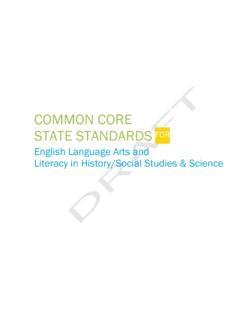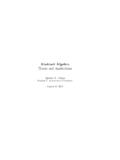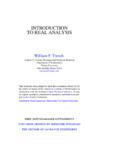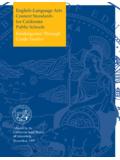Transcription of English Education in Japan -From Kindergarten to ...
1 English Education in Japan -From Kindergarten to University Atsuko Ikegashira, Yumi Matsumoto and Yoshiko Morita Reference data: Ikegashira Atsuko, Matsumoto Yumi and Morita Yoshiko (2009) English Education in Japan From Kindergarten to University. In: Reinelt, R. (Ed.) (2009) Into the Next Decade with (2nd) FL Teaching Rudolf Reinelt Research Laboratory EU Matsuyama, Japan , p. 16-40. English Education in Japan : From Kindergarten to University Atsuko Ikegashira (Yamawakigakuen Junior College) Yoshiko Morita(Otsuma Women s University) Yumi Matsumoto(Yamawakigakuen Junior College, a part-time instructor) 1. Introduction There are serious problems concerning English Education in Japan . The most serious one, which is repeatedly referred to, is the poor communicative ability of the Japanese people in English .
2 We study English for at least six years in junior and senior high school . Despite the long period of English Education , most of us cannot use English as we would like. Where does this situation stem from? We are going to contemplate on the reasons of this problem and the solution are presented in this report. Our educational system is described in section 2. The present situation of English Education in Japanese schools affecting each level is described in section 3. Finally in section 4, a proposal is made to improve the present situation. The conclusion is that English should be introduced in much earlier stages of Education , in the first or second year in elementary school and in Kindergarten . 2. The Educational system of a second language in Japan The educational system in Japan is a 6 year course of elementary school , 3 year course of junior high school , followed by 3 year course of high school and a 4 year (or 2 year) course of university.
3 Elementary and junior high schools are compulsory. Most children go to high school and over 60 % students go to universities or junior colleges . Most students started to study English in junior high schools as a compulsory subject until 2002. Generally speaking, in high schools, they can choose a foreign language other than English as a second language. But in reality, most high schools teach only English mainly because most universities treat English as one of the compulsory subjects in their entrance examinations. The most recent controversial issue in Japan concerning English Education is its introduction to elementary schools. The Ministry of Education , Science and Culture announced in 1998 that English can be introduced in elementary schools from 2002.
4 At that time, it was not a subject of study. It was introduced in the lesson called comprehensive learning . Comprehensive learning was introduced into elementary schools as a means to enable Education free from pressure. Schools can provide any kind of program in this period; planting rice, making rice cakes, listening to story tellers or inviting English speaking guests and communicate with them. A lot of elementary schools did invite foreigners and children greeted them in English . They were allowed to have 11 English classes a year at the most. Most schools, however, have an English hour only once or twice a year. The introduction of English into elementary schools is not aimed at teaching English skills.
5 It is a way to introduce international awareness into students. In 2008, the Ministry of Education , Science and Culture announced that English will be introduced into elementary schools once a week (35 lessons in total in a year) as a regular class in fifth and sixth grade. They are not supposed to give any grade to the English lessons. The aim of the introduction of English , they say, is to train children to communicate with others actively and encourage them to communicate with English speaking people. The program will start in 2011 but most elementary schools have already started their original English programs. In some advanced schools, students have English lessons twice a week from first grade.
6 There is a great diversity in the content and frequency of the English lessons, which has caused serious problems. We will point out some of these problems and want to present a proposal on this issue. 3. Problems with English Education in Japan Universities and high schools The present situation As the number of children has been decreasing in Japan , most students who want to go to university can enter without any difficulty or without studying so hard if they so choose. The result ,of which, is the decrease in their academic ability. All the teachers in the universities are struggling with this and the teacher s association for remedial Education was established five years ago. The number of teachers who join the association has doubled every year.
7 We are members of the English department and are struggling with the poor vocabulary of our students. Due to the lack of vocabulary, they cannot read properly. They cannot write English sentences or communicate effectively with native teachers of English because of it. Students of other departments are in worse condition. For example, students of the science department are not good at studying a foreign language in general and when they enter university through a recommendation, English is not a requirement to be It is quite difficult for these students to find interest in studying English even though most universities make English compulsory for freshmen. Most high schools teach English as a compulsory second language.
8 The frequency of lessons depends on how much study time each student needs. Those who go to university, whether they become a Humanities major or a Science major, English is compulsory and they should study hard. As for the students who want to become the Humanity major, they take five or six classes of English a week and when they are in their third year they take more than seven English lessons in a week. Those who major in Science take at least two or three English classes a week every year. On the other hand, those who do not go to university have only one or two English lessons a week only in the first and/or second year of high school . They mainly study grammatical points to prepare for the university entrance examinations.
9 It is very rare for high school students to have oral communication classes. They read textbooks, solve the questions in grammar books and write simple sentences following the pattern in the textbooks. Problems The biggest problem lies in the educational system of Japan itself and the entrance examinations of universities. The educational system in Japan , as stated above, is largely divided into two: compulsory Education in elementary schools and junior high schools and optional Education in high schools and universities or junior colleges. Even though high school Education is optional, % students(as of 2008) go to high schools. There is also another division in the Japanese educational system; public schools and private schools.
10 Most of the public schools are built according to the 6-3-3 year system. On the other hand, most private schools are established with 6-6 year system, junior and senior high schools combined. The reason why most private schools combine senior and junior high schools is because it helps students to study efficiently and enjoy their school lives at the same time. In the case of public junior and senior high schools they are divided into three years for junior high school and another three years for senior high school , and the students have to prepare for the entrance examinations soon after they enter junior high school . The students are between the ages of 13 to15 years old and it is desirable for the students of these ages to enjoy sports or other activities.








